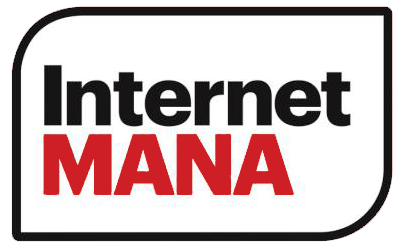Ae Marika! 18 March 2014
Posted on March 18, 2014 by admin in Ae MarikaThe weather wasn’t too flash on Saturday but it didn’t stop hundreds of people attending the opening of the new wharekai at Mataitaua marae in Utakura. They lost their last one in a fire about 8 years ago, but used the tragedy as an opportunity to build a new wharekai, a new ablutions block and do up the whare hui at the same time, and I was reminded of the importance of having a dedicated group of people pushing the project to completion.
The weather may not have been the best, but the atmosphere was warm, the korero was lively, the kai was awesome and the kids were great.
And while I’m on the subject, I just want to pass on my appreciation to my neighbour, Shorty Murray, for all of his good work in getting Waimanoni renovated. The wharehui is done, the wharepaku have been done, and they’re working on the wharekai right now. Living just across the road means I notice changes at the marae more than most and it’s been a while since it’s been fully operational, but from what I can see things are lookin’ good for an opening mid-year. I can’t wait.
And having segue’d smoothly back into Ngaitakoto territory, I’d just like to mention a young First Nations man visiting us from Canada. His name is Khelsilem Rivers and he’s travelling Aotearoa to learn about language revitalisation. His tribe is only about 4,000 strong and they’ve only got 7 fluent speakers left (sounds a bit like Ngaitakoto … especially given his name is Rivers which is the pakeha version of the name Awarau who is one of Ngaitakoto’s main ancestors) so he’s down here to learn what steps Maori have taken to save our language.
And as it happens, he’ll be spending a day out with Mangu Awarau and Rangitane Marsden tomorrow to get a feel for how Treaty settlements may impact local iwi, so that ought to help make him feel at home as well.
Maori language recovery efforts (kohanga, kura, wharekura, wananga, wananga reo, the Maori Language Act, Maori Language Commission, iwi radio, Maori television) are seen as world leading initiatives, and indigenous people from across the world often come here to learn about the processes and about the struggle it took to get where we are now.
That struggle can be traced back to the early 1970’s when it became obvious that less and less people in New Zealand were able to speak Maori. It was feared that the language was in such a state of decline that it might be lost forever, so some dedicated individuals and groups led by Nga Tamatoa and the Te Reo Maori Society decided to do something about it.
They led the drive for a petition to get Maori taught in schools which eventually drew more than 30,000 signatures. The petition was presented to Parliament on 14 September 1972 by Hana Jackson, one of the leaders of Nga Tamatoa, who, although she couldn’t speak Maori herself, was dedicated to the belief that every Maori child should have the right to learn their native tongue. Sept 14 became known as Maori Language Day which in 1975 led to the establishment of Maori Language Week.
Me mihi atu ki a ratou e tu kaha i aua ra kia ora ai to tatou reo Maori.
AE MARIKA is an article written every week by Hone Harawira, leader of the MANA Movement and Member of Parliament for Te Tai Tokerau. You are welcome to use any of the comments and to ascribe them to Mr Harawira. The full range of Hone’s articles can be found on the MANA website at www.mana.net.nz.



Discussion · No Comments
There are no responses to “Ae Marika! 18 March 2014”.No one has posted a comment on this post yet. Start the discussion!
Leave a Comment